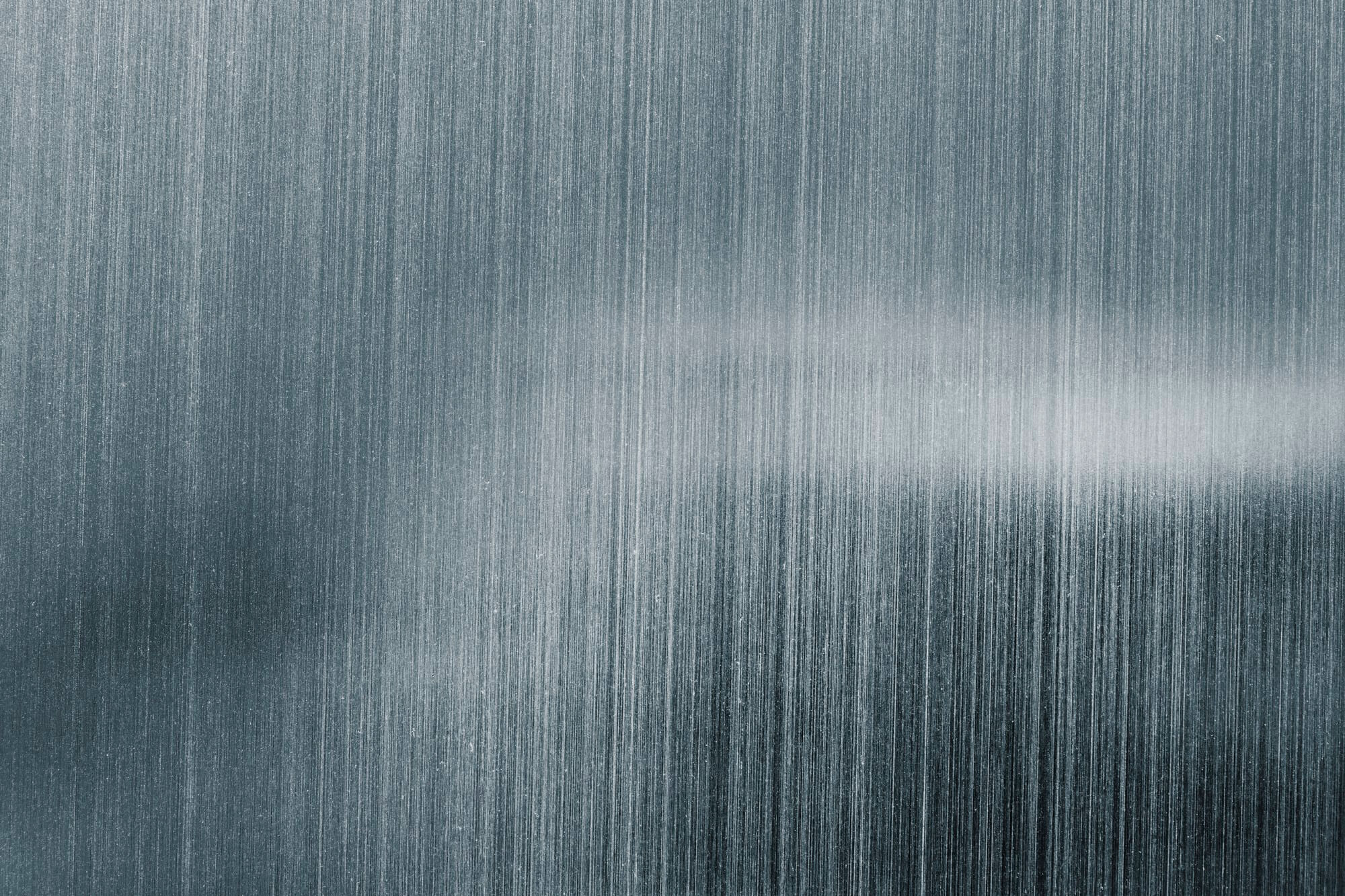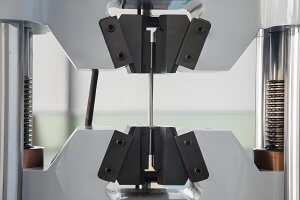CNC machining has revolutionized the manufacturing industry by enabling the precise production of complex parts. However, even with the advanced capabilities of CNC machines, the surface quality of the final product may not always meet the desired specifications. The machining process can leave behind tool marks, surface roughness, and burrs, making additional surface treatment processes necessary to improve these imperfections.
Surface treatment is crucial in many industries, especially those with stringent functional and aesthetic requirements. For instance, in automotive and aerospace industries, components need to be highly functional and possess a high-quality surface finish to withstand harsh environments. This is where wire brushed finish comes into play, providing an essential supplementary technique in manufacturing.
What is Wire Brushed Finish?
A wire brushed finish is a surface treatment technique that uses brushes with metal bristles to create a textured surface on materials. This process can be applied to various metals, including steel, aluminum, cast iron, and certain non-metal surfaces.
The intensity of the wire brushing can be adjusted to achieve different levels of texture, from a fine, smooth finish to a more pronounced rough surface. This method is particularly effective in removing surface imperfections, enhancing aesthetics, and preparing the surface for subsequent treatments like painting or plating.
Advantages of Wire Brushed Finish in CNC Machining
Incorporating wire brushed finish as a post-CNC machining process can bring several key advantages to the final product, especially for parts that require both precision and a high-quality surface.
1. Enhanced Aesthetics
Wire brushed finish provides a uniform and aesthetically pleasing texture, making CNC machined parts visually more attractive. This is particularly important for consumer-facing products where appearance is as crucial as functionality. The textured surface created by wire brushing can give the product a modern, sophisticated look, making it more competitive in the market.
For example, in the production of high-end consumer electronics, the combination of CNC precision and wire brushed finish can produce products that are not only functionally superior but also visually stunning.
2. Deburring and Chamfering
One challenge of CNC machining is dealing with sharp edges and burrs left behind after machining. Wire brushing is an effective method for deburring and chamfering, making the parts safer to handle and better suited for their intended applications.
In industries like automotive manufacturing, where strict safety standards are required, wire brushed finish ensures that parts have no sharp edges that could cause injury during assembly or use.
3. Surface Preparation
If parts require further surface treatments like painting, plating, or coating, the surface must be properly prepared to ensure good adhesion. Wire brushing can create a slightly roughened surface that helps improve the adhesion of these subsequent treatments, ensuring longer-lasting performance and better overall quality.
In the aerospace industry, this is particularly important as parts often need to withstand extreme environmental conditions. A properly prepared surface ensures that protective coatings adhere firmly, providing the necessary durability to withstand the rigors of flight.
Surface Roughness in CNC Machining
Surface roughness is a critical factor in CNC machining, influencing both the appearance and performance of the part. Roughness refers to the small, closely spaced irregular deviations on a surface, typically caused by the machining process. The level of roughness can significantly impact the part’s friction, wear, and lubrication properties in its final application.
Key Factors Affecting Surface Roughness:
- Tool Material and Condition: The type and condition of the tools used in CNC machining largely determine the final surface roughness. Sharp, well-maintained tools produce smoother surfaces, while worn or damaged tools increase roughness and cause surface defects.
- Machining Parameters: Factors such as feed rate, cutting speed, and depth of cut also affect surface roughness. Optimizing these parameters is crucial for achieving the desired surface quality without sacrificing machining efficiency.
- Material Properties: The hardness, ductility, and composition of the material being machined also influence surface roughness. Softer metals like aluminum may produce smoother surfaces compared to harder materials like stainless steel.
Measuring Surface Roughness:
Surface roughness is typically measured using parameters like Ra (Arithmetic Mean Roughness) and Rz (Maximum Height Roughness). These measurements provide insights into the surface texture and help determine if further processing, such as wire brushing, is necessary.
The Interaction Between Wire Brushed Finish and Surface Roughness
Wire brushed finish can significantly alter the surface roughness of CNC machined parts, either by reducing roughness to achieve a smoother surface or by intentionally increasing roughness to create a textured finish. This interaction is particularly important in applications where specific surface characteristics are required to meet functional or aesthetic demands.
Examples of Surface Roughness Adjustment:
- Reducing Roughness: When a smoother surface is required, wire brushing can be used to polish the surface, reducing the peaks and valleys created during machining. This is often necessary for parts that will undergo further processing, such as anodizing or plating.
- Enhancing Texture: Conversely, wire brushing can be used to create a textured surface by increasing roughness, providing specific aesthetic or functional characteristics. For example, certain parts may require a textured surface to improve grip or to facilitate better bonding with other components.
Case Study: Surface Treatment Optimization for Aerospace Components
In the aerospace industry, both precision and surface quality are paramount. The combination of CNC machining and wire brushed finish is particularly effective in such applications. Aerospace components often require high-strength aluminum alloys (such as 7075 or 7050), which are prone to surface defects during machining.
Challenges:
- Material Characteristics: Aluminum alloys used in aerospace, while lightweight and strong, are prone to surface defects such as tool marks or scratches during machining. These defects can compromise the performance and safety of the components.
- Surface Integrity: Maintaining surface integrity is crucial for aerospace parts, as any defects could lead to premature wear, fatigue, or failure under the extreme conditions experienced during flight.
Solution:
Applying wire brushed finish after CNC machining effectively removes surface defects and enhances the overall integrity of the parts. This process helps smooth out imperfections and prepares the surface for subsequent treatments (such as coatings), ensuring the components meet the stringent requirements of the aerospace industry.
Practical Considerations for Implementing Wire Brushed Finish in CNC Machining
Incorporating wire brushed finish into the CNC machining process requires careful consideration of several practical factors to ensure consistent and high-quality results.
1. Material Compatibility
Not all materials are suitable for wire brushing. While metals like aluminum, steel, and stainless steel generally perform well, softer metals may require a gentler brushing technique to avoid excessive wear or damage.
For instance, when working with cast iron, wire brushing must be carefully controlled to prevent removing too much material or altering the part’s dimensions. Choosing the right brush material and technique is essential to achieve the desired surface finish without compromising the part’s structural integrity.
2. Brush Selection
Selecting the appropriate brush material is crucial for achieving the desired surface effect. Brushes are available in various materials, including steel wire, brass wire, and nylon bristles, each suited to different surface types and treatment requirements. The hardness of the bristles, wire diameter, and brush speed will all influence the final surface quality.
In applications requiring a high degree of surface precision, finer brushes with softer bristles can be used to achieve a more delicate finish. Conversely, coarser brushes with stiffer bristles can create a more pronounced surface texture, suitable for applications that require increased grip or visual appeal.
3. Process Control and Consistency
Achieving consistent results with wire brushing across multiple parts requires careful control of process parameters, including brush speed, pressure, and application angle. In an automated environment, CNC machines can be programmed to integrate wire brushing as part of the machining cycle, ensuring consistency across production batches.
For example, in high-volume manufacturing environments, integrating wire brushing with CNC machining simplifies the production process and enhances the consistency of the final products. This integration ultimately improves product quality and customer satisfaction.
Conclusion
Wire brushed finish offers an effective method for enhancing the surface quality of CNC machined parts. By incorporating this surface treatment into the CNC machining process, manufacturers can produce parts that meet both the functional and aesthetic demands of various industries.
In sectors where precision and surface finish are critical, such as aerospace and automotive industries, the combination of CNC machining and wire brushed finish ensures that parts meet the highest standards of quality and performance. By understanding the synergy between these processes, manufacturers can better meet customer needs, delivering parts that excel in both function and appearance.
Data Tables: Surface Roughness and Treatment Impact
| Parameter | CNC Machined Surface | After Wire Brushed Finish |
|---|---|---|
| Ra (μm) | 0.8 | 0.4 |
| Rz (μm) | 4.0 | 2.5 |
| Aesthetic Appeal (1-10 scale) | 6 | 9 |
| Adhesion Strength (MPa) | 120 | 150 |
| Surface Defects (Count) | 15 | 3 |
| Process Time (minutes) | 10 | 12 |
| Material | Brush Material | Surface Roughness After Machining (Ra, μm) | Surface Roughness After Wire Brushing (Ra, μm) |
|---|---|---|---|
| Aluminum 7075 | Steel Wire | 0.7 | 0.3 |
| Stainless Steel 304 | Brass Wire | 0.9 | 0.4 |
| Cast Iron | Nylon Bristle | 1.2 | 0.6 |
| Carbon Steel | Steel Wire | 0.8 | 0.4 |
| Titanium Alloy | Brass Wire | 0.5 | 0.2 |
Other Articles You Might Enjoy
- Surface Refinement: Leveraging Bead Blasting for CNC Machining
In the realm of CNC machining, surface quality plays a pivotal role in determining the overall performance and aesthetics of the final product. Leveraging bead blasting as a surface refinement…
- Elevating Surface Finish of CNC Machining Parts with High-Speed Techniques
High-speed cutting techniques have revolutionized CNC machining, offering not only increased production efficiency but also superior surface finishes on machined parts. The appeal of high-speed machining lies in its ability…
- Optimizing CNC Machining Parts Using Constant Surface Speed Techniques
CNC machining, particularly on lathes, can be a complex process, but understanding and utilizing constant surface speed (CSS) techniques can simplify and enhance the efficiency of your operations. The key…
- How Can Surface Finish Be Optimized in CNC Machining of Stainless Steel?
What Factors Affect Surface Finish in CNC Machining of Stainless Steel? The quality of the surface finish in CNC machining stainless steel is influenced by a variety of factors ranging…
- How to Choose the Right Surface Finish Techniques for Precision CNC Machining of Food Automation Machinery?
Surface Finish in Precision CNC machining Precision CNC machining plays a pivotal role in manufacturing components for food automation machinery. The surface finish of these components is crucial not only…
- How to solve surface roughness problems in cnc machining?
Introduction to CNC Machining and Surface Roughness Problems The process of Computer Numerical Control (CNC) machining plays a vital role in the manufacturing industry. This automated process uses computers to…






